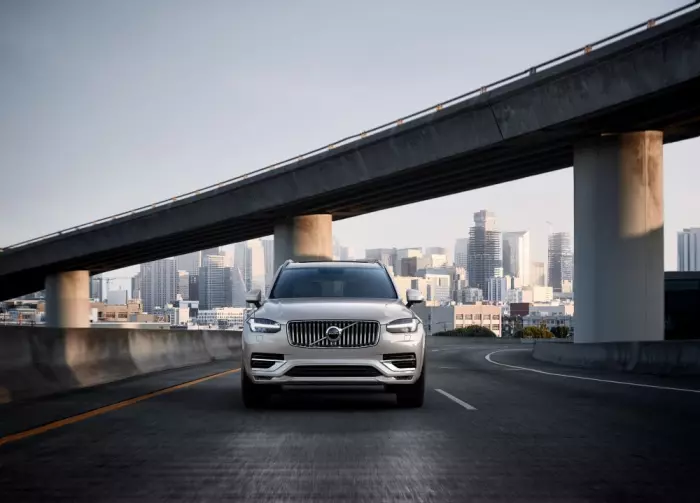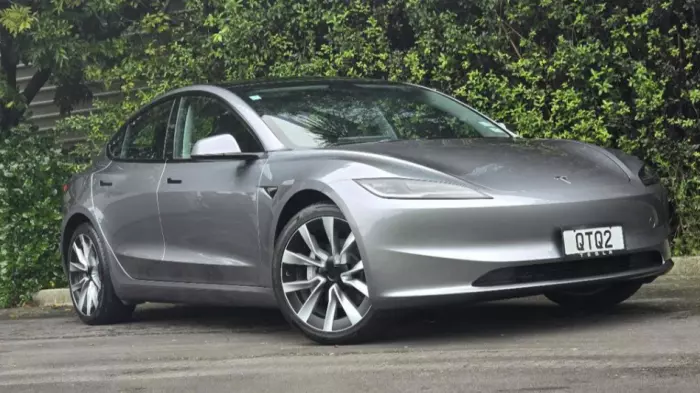The Volvo XC90 is an immensely capable vehicle. It is a fantastic tribute to Swedish engineering and Chinese financial backing (Volvo Cars is owned by a multinational controlled by Chinese billionaire Li Shufu).
But, still, I manage to break it.
This is a story of how I became immensely stressed early on a Sunday evening.
I am a pretty careful driver, which in part is why I feel OK driving expensive cars.
When my test drive of the new Alfa Romeo Giulia was canned because the person before me crashed it, I just thought, “There but for the grace of God go I.”
When the Auckland Lexus staff warned me the $200k-plus LC Convertible with 100km of the clock had already been scraped by the only other press driver, I smiled and managed to sidestep schadenfreude.
But as I am going over the Auckland Harbour Bridge, a stone from a car coming the other way hits the edge of the windscreen and, whack, I’m left to watch a crack growing fast right across the glass.
Meanwhile, the teenager, who is a bit prone to anxiety, starts asking rapid-fire questions and updating me on the crack’s progress. “Will you get in trouble? Will we have to pay for it? Do we have to sell our house now? Is it safe? Are we going to crash? Will it explode? What if they don’t believe it’s not your fault? Will you lose your job?”
Followed by the slightly saner, “Hmmm, I think I should shut up now. I’m not sure I am helping the situation much.” Well, yes.
We gingerly drive home, before Volvo let me know it is still quite safe to drive and they won’t be foreclosing on my house over it.
Up until the bridge, driving the XC90 had been a lot of fun. It is one of those vehicles that is really hard to write about because it just does everything right. It is an SUV I would buy if I had the money. (Rumours of a new electric self-driving model next year would make me seriously consider waiting, though.)
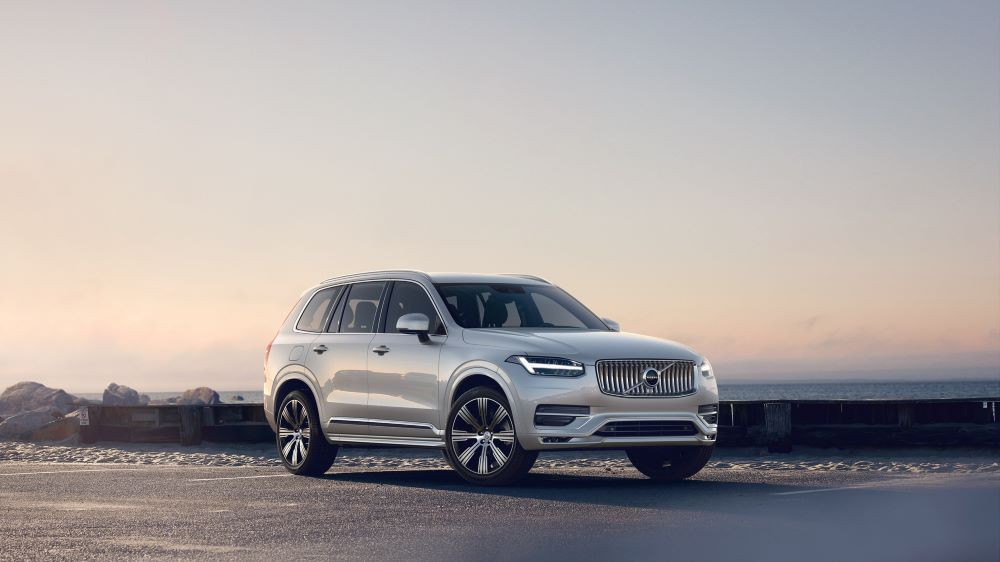 The Volvo XC90
The Volvo XC90
The XC90’s assisted-driving mode even dealt with heavy rain at night without an issue (though I was a little nervous about leaving it on for too long). The car reads and displays road-sign information with 95% accuracy, which is a big plus over the similarly priced Hyundai Palisade I was driving beforehand.
The headlights, however, are possibly too clever for their own good. They’re the kind that, if human, would spend all year at school making wisecracks down the back of the class, then get 95% in the final exam.
I’m fairly certain Volvo has used stage lighting directors to train tiny Swedish Arctic foxes to sit behind the light equipment and rotate the beams as needed. Driving along with the lights effectively on full beam except for a darkened small rectangle for the car in front is just freaky. And slightly distracting. They’ll also highlight street signs, shine around corners and make a fairly passable latte.
BusinessDesk tests the XC90 T6 4WD Inscription, which is priced at $106,000 as standard. The press car has active air suspension ($4500), the Lifestyle Pack (excellent Bowers & Wilkins stereo, beautiful powered panoramic sunroof and tinted rear windows, $6500) and a couple of other additions, bringing its price up to $118,010, including on-road costs. Volvos have three years of included servicing.
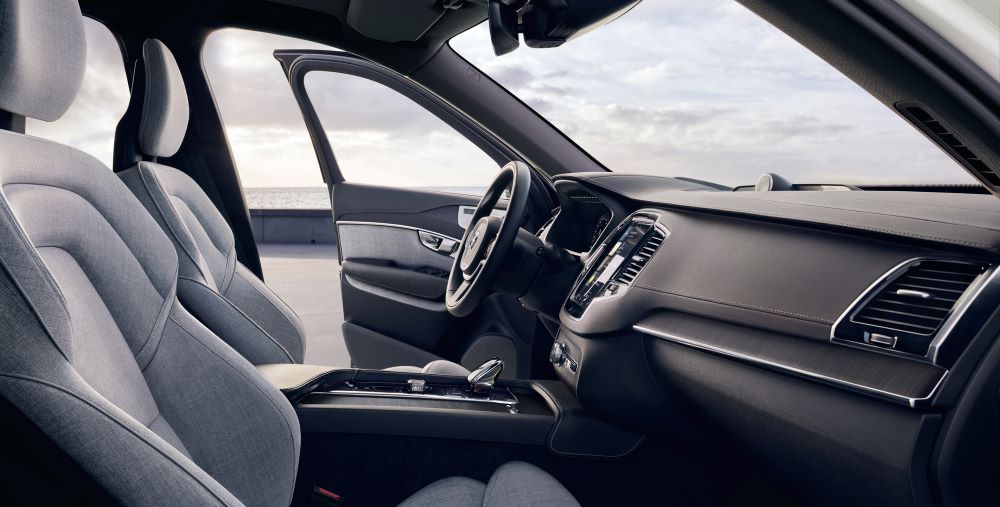 Up front in the XC90
Up front in the XC90
The two-litre supercharged and turbocharged engine puts out an impressive 235kW of power and accelerates like a rocket thanks to 400Nm of torque. This is a seven-seater SUV that gets to 100km/h in 6.5 seconds and will use just 8.5 litres of petrol to go 100km. In Dynamic mode it growls like a bear and speeds like a cheetah.
Volvo also makes a plug-in hybrid (PHEV) version of the XC90, and a fully electric version will be on the way as Volvo moves to phase out petrol-only vehicles by 2025. It has already dumped diesel.
The PHEV version takes the same engine as the tested car and adds two electric motors. It will be available in New Zealand as soon as Volvo NZ can get its hands on it.
The air suspension is coupled with something called Four C Active Chassis, which to you and me means that the ride is smooth, it corners well and you hardly notice bumps in the road, even if you live on a poorly maintained dirt road (ahem, Kaipara District Council…).
The test car’s interior makes use of a merino blend that incorporates 70% recycled polyester. It also features a built-in booster seat in the middle row. Its design is excellent all around, though you’d be hard-pressed to get adults to sit in the rear for too long.
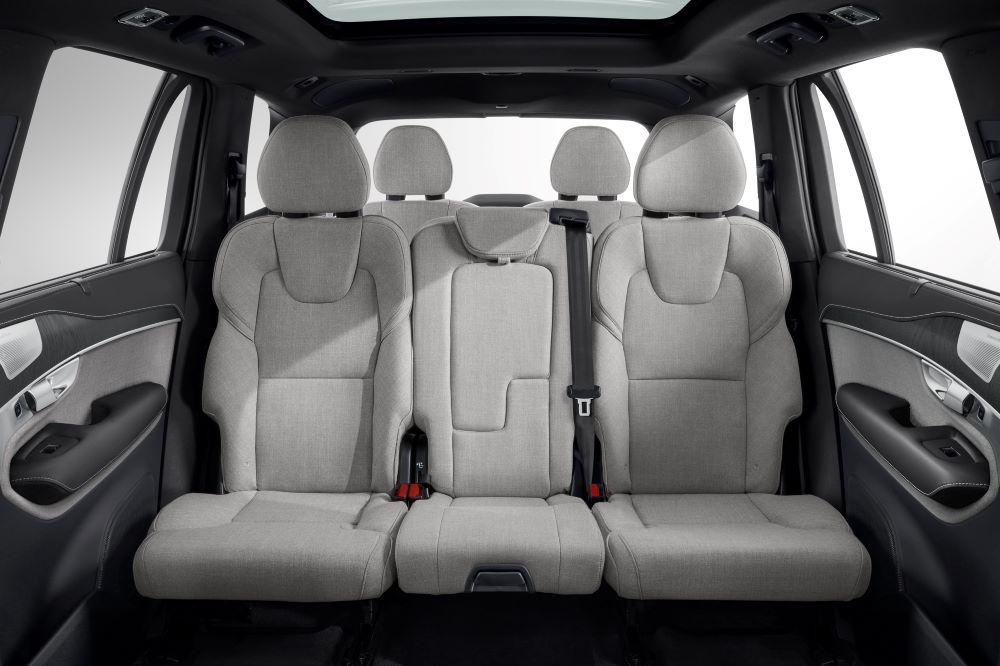 The XC90 interior
The XC90 interior
The dashboard includes a large iPad-like screen that is impressive in its simplicity and comes with preloaded apps such as restaurant review site Yelp.
A few more physical buttons would be helpful, particularly for controlling the heater while driving.
On gripes, the Volvo key fob is a pleasing rectangle, but has a clean top and bottom with buttons hidden away on the sides and so small they are almost impossible to differentiate – a great example of design over function.
This is a Volvo, so I need to talk about safety. But to avoid boring you, I promise it has every safety feature ever invented, short of ejector seats. Actually, they’d be pretty useful for dealing with teenagers.
The one feature I really like, though, is the “run-off-road mitigation” which detects if you are about to leave the road unintentionally and then steers you back, and brakes until you are again heading along the tarmac.
There are also heaps of collision, blind spot, cyclist and other protection devices. If only they’d included “random stone hitting the windscreen” avoidance technology.


